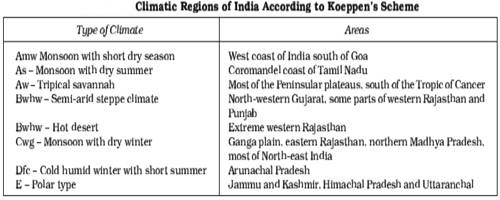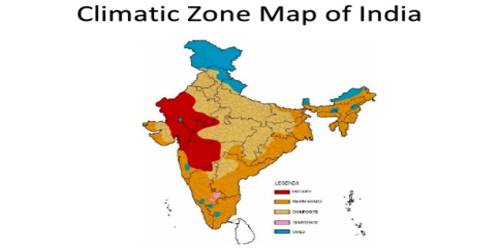Climatic Regions of India
The whole of India has a monsoon type of climate. But the combinations of elements of the weather, however, reveal many regional variations. These variations represent the sub-types of the monsoon climate. It is on this basis that the climatic regions can be identified. A climatic region has a homogeneous climatic condition which is the result of a combination of factors. Temperature and rainfall are two important elements which are considered to be decisive in all the schemes of climatic classification. The classification of climate, however, is a complex exercise. There are different schemes of classification of climate. Major climatic types of India based on Koeppen’s scheme have been described below:
Koeppen based his scheme of Climatic classification on monthly values of temperature and precipitation. He identified five major climatic types, namely:
(i) Tropical climates, where mean monthly temperature throughout the year is over 18°C.
(ii) Dry climates, where precipitation is very low in comparison to temperature, and hence, dry. If dryness is less, it is semi-arid (S); if it is more, the climate is arid (W).
(iii) Warm temperate climates, where mean temperature of the coldest month is between 18°C and minus 3°C.
(iv) Cool temperate climates, where the mean temperature of the warmest month is over 10°C. and mean temperature of the coldest month is under minus 3°C.
(v) Ice climates, where the mean temperature of the warmest month is less than 10°C.
He used S for semi-arid and W for arid and the following small letters to define sub-types: f (sufficient precipitation), m (rain forest despite a dry monsoon season), w (dry season in winter), h (dry and hot), c (less than four months with mean temperature over 10°C), and g (Gangetic plain). Accordingly, India can be divided into eight climatic regions (Table).

















